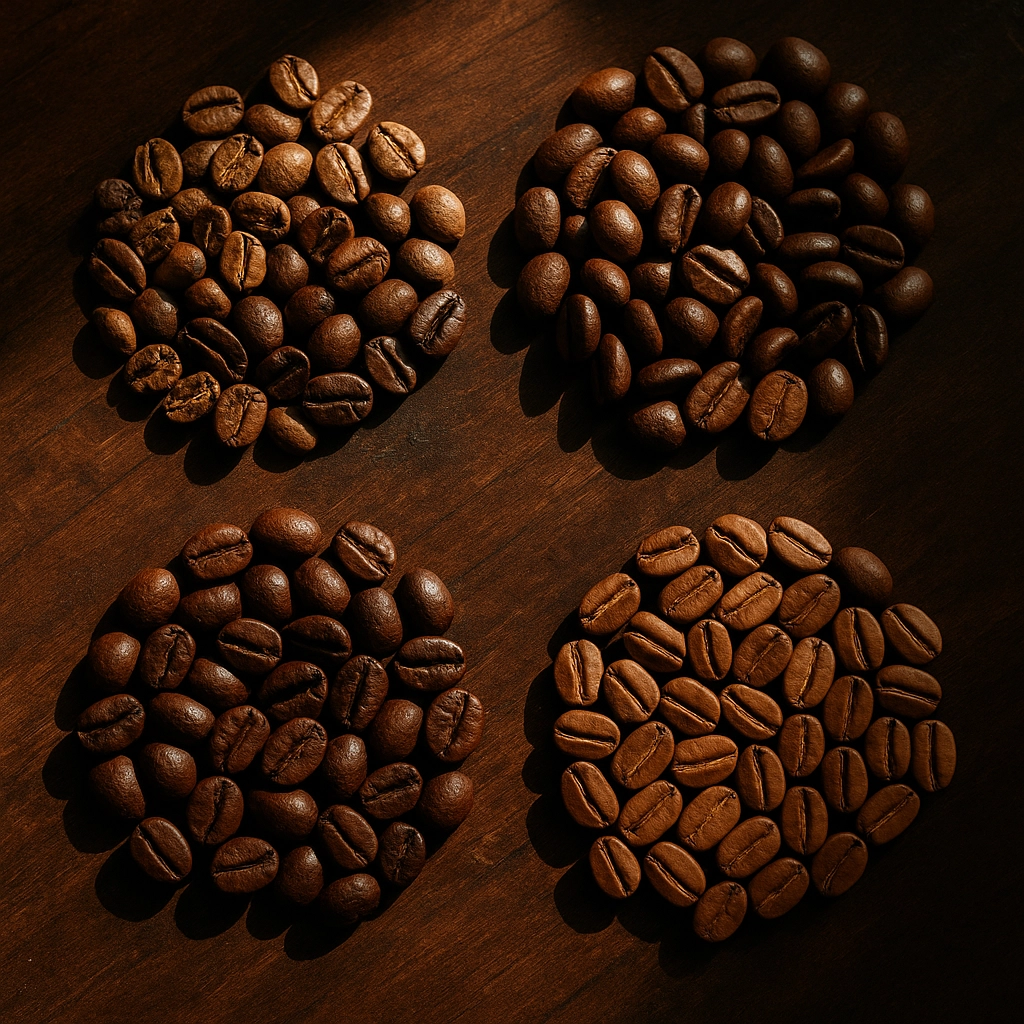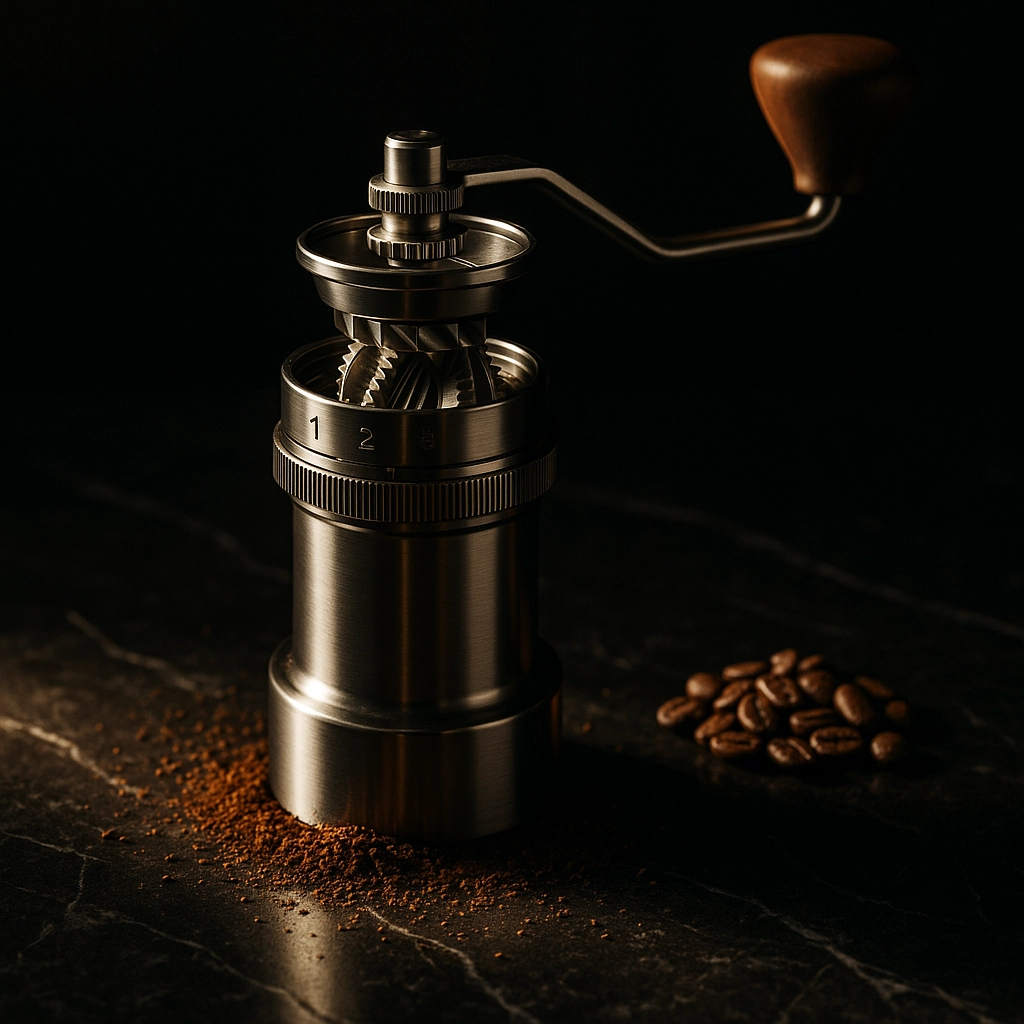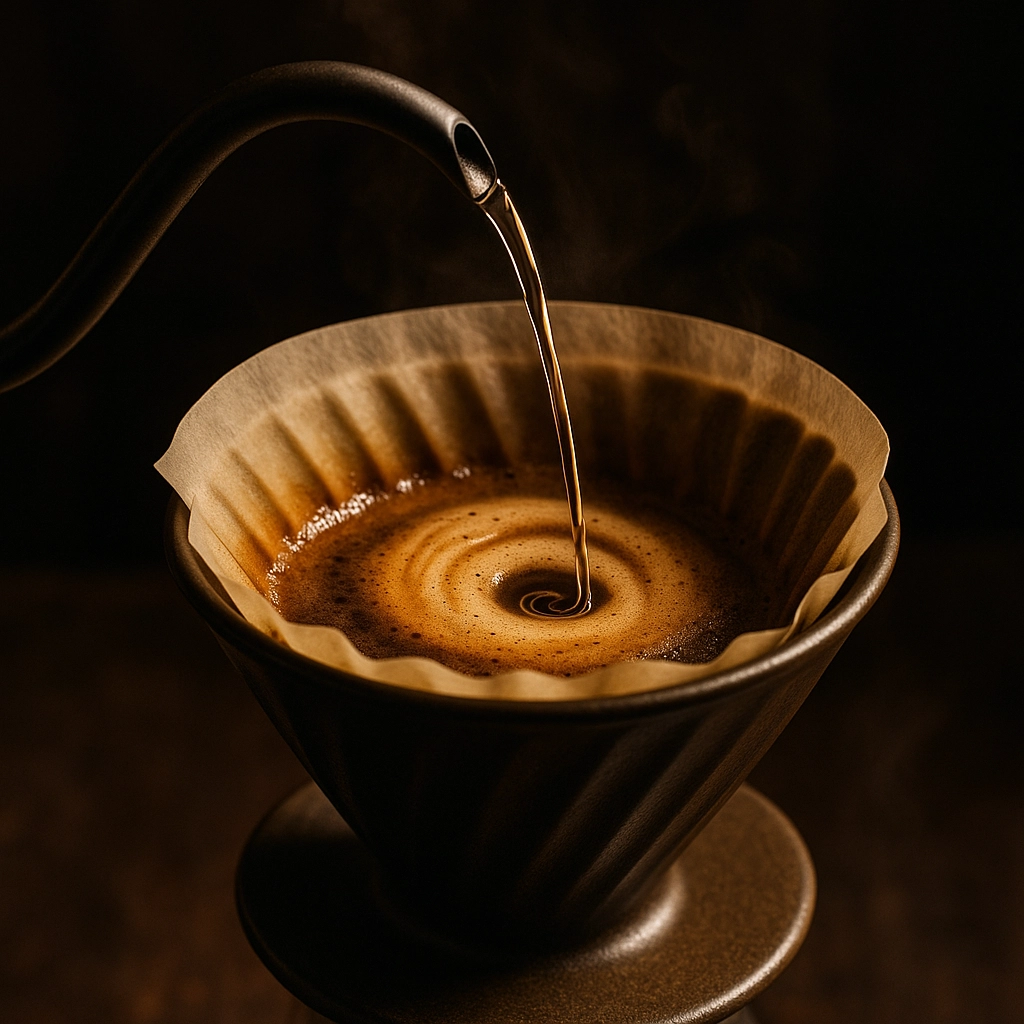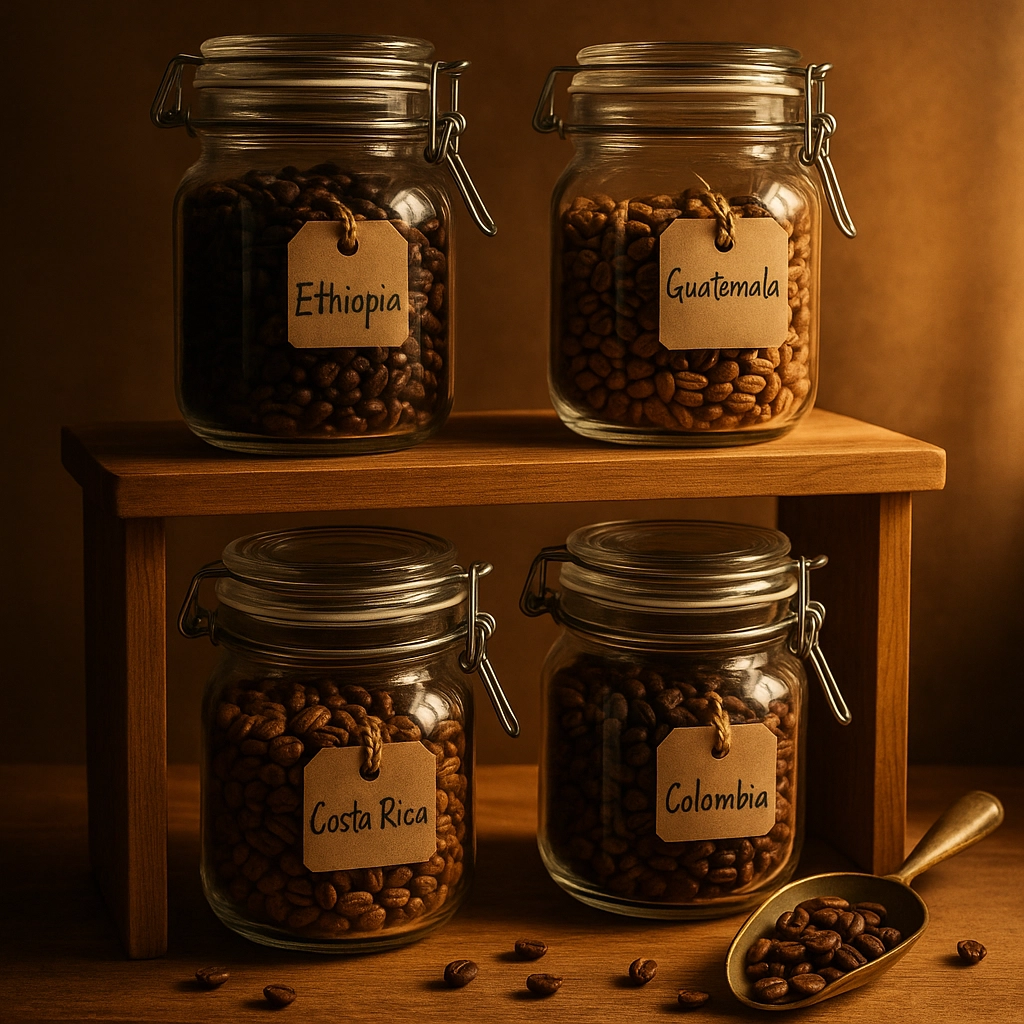Single-origin coffee is like getting a passport to the world's most incredible coffee regions—all from the comfort of your kitchen. Unlike blended coffees that mix beans from multiple locations, single-origin coffee comes from one specific geographic location, preserving the unique personality that only that place can create.
Think of it this way: if blended coffee is like a symphony where different instruments blend together, single-origin is like a stunning solo performance where you can hear every beautiful note clearly.
What Makes Single-Origin Coffee So Special?
The magic of single-origin lies in something coffee lovers call terroir—the same concept that makes wines from different regions taste distinctly different. It's the combination of climate, soil, altitude, rainfall, and even the specific coffee plant variety that creates flavors you simply can't replicate anywhere else.
When you sip a single-origin coffee from Ethiopia, you're tasting the bright, floral notes that come from high-altitude growing conditions and ancient coffee varieties. A Colombian single-origin might greet you with rich chocolate and caramel flavors, while a Guatemalan coffee could surprise you with its wine-like acidity and fruity undertones.
The transparency is refreshing too. Instead of wondering "what's in this blend?", you know exactly where your coffee came from, often down to the specific farm or even the particular field where it was grown.
Understanding the Different Types of Single-Origin
Not all single-origin coffees are created equal, and understanding the distinctions helps you choose the perfect beans for your taste preferences.
Country-Level Single-Origin represents the broadest category, where all beans come from the same country but potentially different regions within that country. While still maintaining some regional characteristics, these coffees offer a general flavor profile associated with that nation's coffee-growing regions.
Regional Single-Origin narrows things down to a specific area within a country—like beans exclusively from the Huila region in Colombia or the Yirgacheffe region in Ethiopia. These coffees showcase the distinct characteristics that make each region famous among coffee enthusiasts.

Estate Coffees take specificity even further, coming from individual farms or estates. These coffees often represent the pinnacle of quality control, as single producers can maintain consistent growing, harvesting, and processing standards across their entire operation.
Micro-Lot or Small-Lot coffees represent the ultimate in single-origin specificity. These beans come from tiny parcels of land, sometimes just a few hundred pounds of coffee from a specific hillside harvested on a particular day. While more expensive, they offer the most unique and unrepeatable flavor experiences.
Why Choose Single-Origin Over Blends?
Blended coffees certainly have their place—they're designed for consistency and balance. But single-origin offers something completely different: adventure, education, and flavor experiences you'll never forget.
Single-origin coffees let you become a coffee explorer. You can taste the difference between high-altitude Mexican beans with their nutty, chocolate notes and bright Kenyan coffees known for their black currant and wine-like characteristics. It's like taking a flavor journey around the world without leaving home.
The learning curve is part of the fun. As you try different origins, you'll start recognizing the signature flavors of different regions and developing your palate in ways that drinking the same blend every day simply can't provide.
Plus, many single-origin coffees come with fascinating stories about the farmers, cooperatives, and specific growing conditions that created your cup. It adds meaning and connection to your daily coffee ritual.
Essential Equipment for Single-Origin Success
Great single-origin coffee starts with great equipment, but you don't need to break the bank to get started.
The Grinder is Your Most Important Investment
If you're going to invest in one piece of equipment, make it a quality grinder. Single-origin coffees have delicate, complex flavors that uneven grinding can easily destroy. Blade grinders chop beans inconsistently, creating both powdery fines and large chunks that extract at different rates, muddying those beautiful flavors you're paying extra to experience.
A burr grinder—whether hand-crank or electric—creates uniform particle sizes that allow for even extraction. This consistency is crucial for single-origin success because it lets the coffee's natural characteristics shine through clearly.

Brewing Equipment That Highlights Origin Character
Pour-over methods like the V60, Chemex, or Kalita Wave are perfect for single-origin coffees because they give you control over variables like water temperature, pour speed, and extraction time. These methods produce clean, bright cups that showcase the unique characteristics of your beans.
A simple digital scale helps you maintain consistent ratios—typically 1:15 to 1:17 coffee to water works well for most single-origins. A gooseneck kettle gives you the pour control needed for even saturation and optimal extraction.
Mastering Your Brewing Technique
Single-origin coffees respond beautifully to attention and care in brewing. Here's how to get the most from your beans:
Water Matters More Than You Think
Since coffee is roughly 98% water, the quality and composition of your water dramatically affects the final cup. Filtered water removes chlorine and other off-flavors that can mask delicate single-origin characteristics. If your tap water tastes good, it'll probably make good coffee. If it doesn't, invest in a simple water filter.
Temperature and Timing
Most single-origin coffees shine when brewed with water between 195-205°F (90-96°C). Lighter roasted single-origins often prefer the higher end of this range to fully extract their bright, acidic notes, while darker roasts do well at slightly lower temperatures.
Grind size and brew time work together. For pour-over methods, start with a medium grind (similar to kosher salt) and a 4-6 minute total brew time. If your coffee tastes sour or weak, try grinding finer or extending brew time. If it's bitter or harsh, go coarser or shorter.

The Art of the Pour
For pour-over brewing, start with a gentle "bloom" pour—just enough water to wet all the grounds (about twice the coffee weight). Wait 30-45 seconds as the coffee releases CO2 and creates a puffy dome. Then continue with slow, steady pours in spiral patterns, keeping the water level relatively constant.
Choosing Quality Single-Origin Coffee
Not all single-origin coffee is created equal. Here's what to look for when selecting beans:
Transparency in Information
Reputable roasters provide detailed information about their single-origin offerings: the specific farm or region, altitude, processing method, harvest date, and roast date. This information isn't just marketing—it helps you understand what flavors to expect and how fresh your coffee is.
Roast Date, Not Expiration Date
Single-origin coffees are best enjoyed 2-30 days after roasting. The roast date tells you exactly when the coffee was roasted, helping you buy at peak freshness. Avoid coffee without clear roast dating.
Processing Methods Matter
How coffee cherries are processed after picking dramatically affects flavor. Washed (or wet) processing tends to highlight bright, clean flavors and acidity. Natural (or dry) processing often creates fruity, wine-like characteristics. Honey processing falls somewhere between, adding sweetness and body while maintaining some brightness.
Seasonal Enjoyment and Storage
Single-origin coffees are agricultural products, which means they're seasonal. Ethiopian coffees might be at their peak in winter months, while Central American coffees shine in spring. Embrace this seasonality—it keeps your coffee experience fresh and exciting throughout the year.
Store your beans properly to preserve their unique characteristics. Keep them in airtight containers away from light, heat, and moisture. Don't refrigerate or freeze whole beans, as this can introduce moisture and off-flavors.

Developing Your Single-Origin Palate
Start your single-origin journey with coffees from well-known regions with distinct flavor profiles. Ethiopian coffees offer bright, floral notes that are easy to identify. Colombian coffees provide familiar chocolate and caramel flavors. Kenyan coffees bring bold, wine-like characteristics that make them unmistakable.
Keep a simple coffee journal noting the origin, roast date, your brewing parameters, and tasting notes. Over time, you'll start recognizing regional characteristics and developing preferences that guide your future purchases.
Don't be afraid to experiment with brewing variables. The same single-origin coffee can taste completely different when brewed with different grind sizes, water temperatures, or pour techniques. This experimentation is part of the fun and helps you understand how to get the best from each origin.
Your Single-Origin Success Plan
Success with single-origin coffee comes from combining quality ingredients with consistent technique and an adventurous spirit. Start with a good grinder, choose reputable sources for your beans, and don't be afraid to adjust your brewing technique based on what you taste in the cup.
Remember that single-origin coffee is about the journey as much as the destination. Each bag tells a story of place, people, and processes that created something unique. By taking the time to understand and appreciate these differences, you're not just making better coffee—you're connecting with coffee culture from around the world, one cup at a time.
The path to single-origin mastery isn't about perfection—it's about curiosity, experimentation, and the joy of discovering flavors you never knew existed. Your kitchen can become a gateway to the world's best coffee regions, and every morning can bring a new adventure in your cup.




